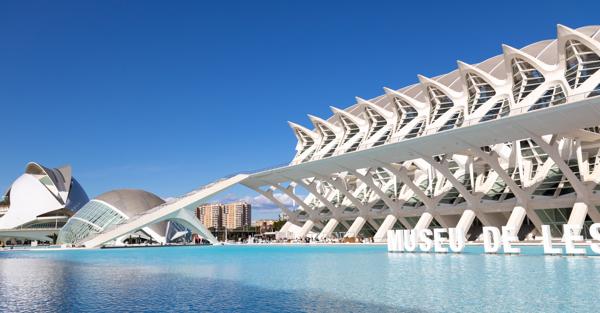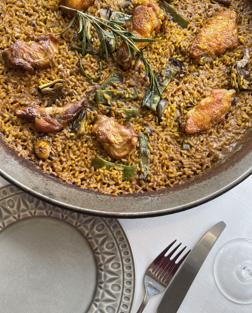Lights, emotions and architecture: the vibrant soul of Valencia
[ad_1]
The flapping sails and clothes, the children running on the beach and the fishermen at work on the boats: life in the summer at El Cabanyal – the beach everyone prefers to call Las Arenas – was one of the favorite subjects of Joaquín Sorolla, the “painter of light” to whom the Museo de Bellas Artes is dedicated Valencia, on the centenary of his death, an unmissable exhibition of 46 works from Masaveu’s private collection, scheduled until next October 1. Instead, Antonio Vega wrote on the soft sands of La Malvarrosa, during his military service. Chica D. Ayersuper classic by Nacha Pop, the definitive Spanish group of the ’80s (if she didn’t tell you much, it’s because you obviously missed out). nightlife Madrid at that time).
The city’s beaches are just one of the many reasons why Valencia is frequently assigned by various (and more or less reliable) rankings to the primacy of Spain’s most livable city. But even without resorting to objective and measurable criteria, twenty-four hours are enough to realize that this is a hospitable city, deep in the Mediterranean, connected to its roots but striving to innovate, and that here it is much easier than anywhere else to find one’s rhythm. And indulge your passion – whether you’re an audiophile, runners, surfer or gastronomy.
In 2024 Valencia will be the green capital of Europe and the presence of Turia Park, which surrounds the historic center and is the largest urban park in Spain, contributes to strengthening this role. After the dramatic 1957 flood, the course of the river was diverted and then transformed into a nine-kilometer green path – inaugurated in 1986 – consisting of palm trees, orange trees, ponds, fountains and bike paths, criss-crossed by 18 bridges, from the oldest such as Puente del Mar and Serranos to more Contemporary like Puentes de las Artes by Norman Foster, near the Valencia Institute of Modern Art, or Puente de l’Assut d’Or, designed by Santiago Calatrava. Twenty-five years ago, it was the Valencian architect who imagined and built the futuristic Ciudad de las Artes y las Ciencias, a hugely ambitious work of architecture that transformed the urban landscape. It is always worth returning to hear a concert or opera at the Palau de les Arts, watch a film or documentary projected on the 900-meter-high concave screen of the Hemisfèric, take part in a workshop at the Museum of Science or admire 45,000 marine specimens from the L Oceanogràfic, the largest aquarium in Europe.
Once the tour is over, it’s time to explore Valencia’s rich and eclectic food scene and meet its ambassador and main protagonist: Quique Dacosta. An hour’s drive south along the Costa Blanca, Spain’s most elegant chef directs an extraordinary avant-garde experience, draped in beauty and depth of thought – worthy of three Michelin stars and number 20 in the new edition of The World’s 50 Best Restaurants, celebrated Most recently in Valencia – overseeing four different establishments in the city. LLisa Negra is the perfect bistro anyone would want at home: great raw materials, skillful cooking over live fire, the best Paella Valenciana (together with Casa Carmela, local historian of Malvarrosa) and one Queso pie tart That alone is worth a visit.
Just around the corner, there’s also El Poblet – a restaurant that celebrates local traditions and produce in a contemporary key, interpreted by the excellent Louis Valls – and Vuelve Carolina, a borderless creative space that allows you to travel, on the plate and in the glass among the flavors of the world. And finally Mercatbar, in the Eixample district, where you can sit at the counter or at the tables and order Tapas to share.
[ad_2]
Source link










